St Nicolai’s Church in the town of Kalkar (115km north of Cologne, 150km SE of Amsterdam) on the German Lower Rhine – a wonderland of woodcarving from the late 15th and 16th Centuries, where a remarkable cast of woodcarvers found themselves with the patronage of wealthy religious brotherhoods. The most remarkable trio were Arndt van Zwolle, working at the end of the 15th Century, and later on Arnt van Tricht and Heinrich Douvermann.
I have not done this remarkable church justice: I needed both a tripod and time in this very dark building, neither of which I had. But I hope I will at least wet your appetite.
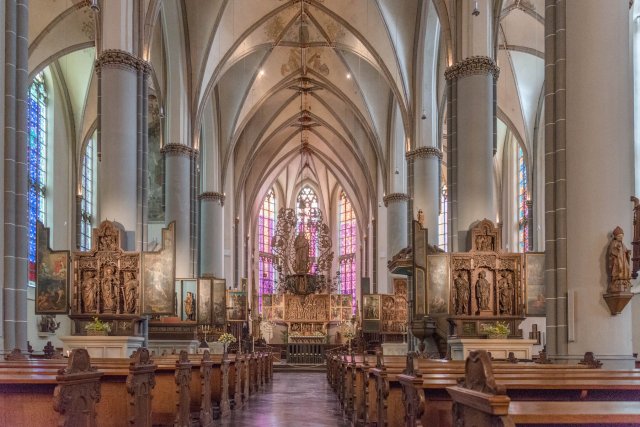
The story of St Nicolai’s probably began in 1230, but became really interesting after it was rebuilt after a devastating fire in 1409. The superstructure was substantially rebuilt into its current form by 1421, but it is the wonderful woodworking from the period around 1488-1560 that makes this perhaps the most celebrated church on the Lower Rhine.
The church has nine surviving woodcarved altars from a remarkable period of creativity between around 1488 and 1560. Five are at least partly visible in this shot. Nearest to camera are, left, the 1535 Trinity Altar, and, right, the 1541 St John’s Altar, both by the remarkable Arnt van Tricht. The central chandelier with the Virgin Mary took from 1508-41 to execute: van Tricht and Douverman were both among the artists who worked on this. The high altar dates to 1488-1500.
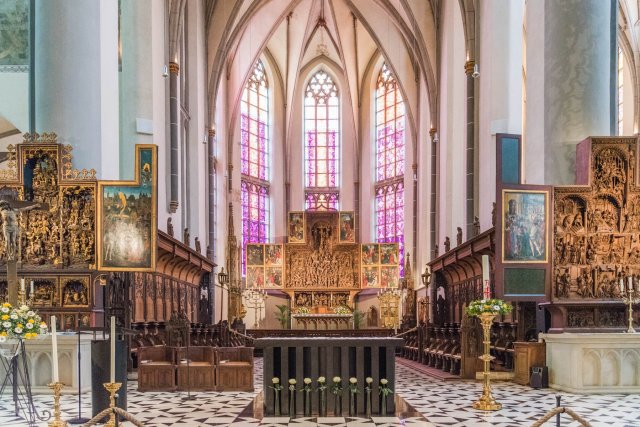
Arndt van Zwolle’s magnificent oak High Altar: begun in 1488, it was still incomplete at van Zwolle’s death, and finished by Jan van Halderen and Ludwig Juppe from 1498-1500. Worked in oak, it shows a multiplicity of scenes from the life of Christ crowned by the Calvary. There are a total of 208 figures carved. Behind it is the stained glass installed in the year 2000, the originals having been destroyed a long time in the passt. These were executed by Karl-Martin Hartmann, a physicist as well as an artist, using motifs like Feynman diagrams, galaxies, and spectroheliographs.
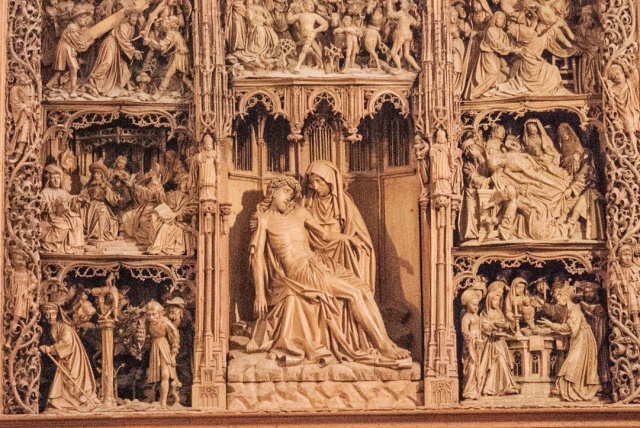
Detail on the Seven Sorrows Altar by Heinrich Douvermann, perhaps the finest of an extraordinary group of woodworkers of the period, on what are now the German-Dutch-Belgian borderlands, executed around 1520. Around the outside, the winding Tree of Jesse is a particularly fine piece of work. The paintings on the sides were executed around 1636 by local artist Hendrik Grotens.
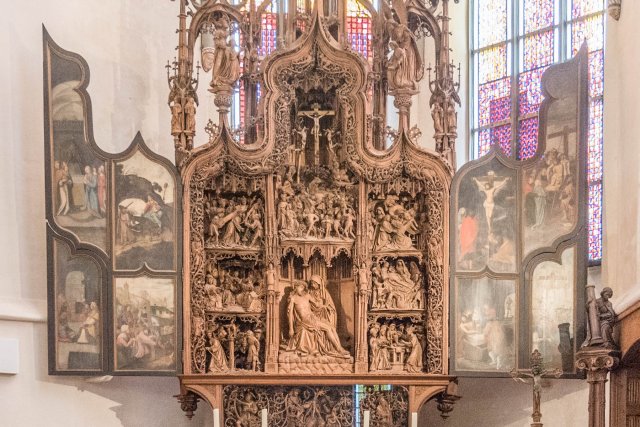
And this is the Seven Sorrows Altar in its fullness, with more of Hartmann’s windows behind.
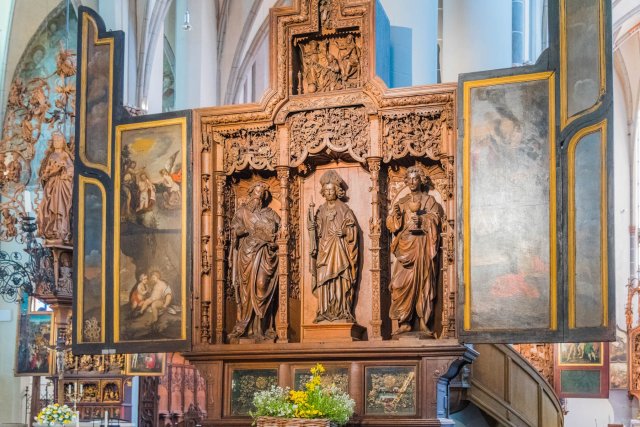
The St John’s Altar (Johannesaltar), executed by Arnt von Tricht in 1541. St John the Baptist (left) and St John the Evangelist (right) flank St Severin. The scenes in the flanking pictures show scenes from the lives of the two St Johns
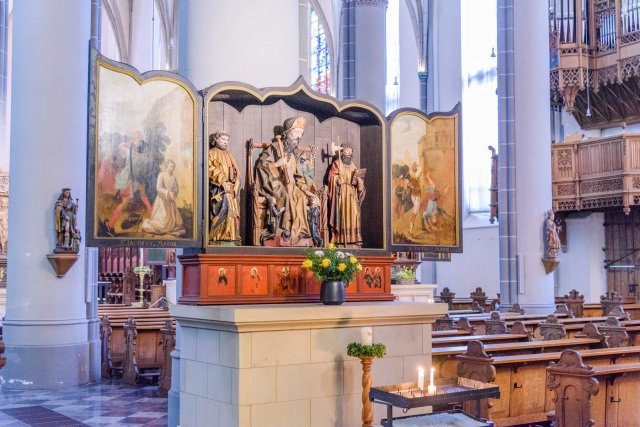
The St James Altar (Jakobusaltar), executed around 1500-1510 by the school of Arnt van Tricht. In oak, like all the other altars here. The wood was cut in local forests, brought around 120 km to the North Sea, and soaked in seawater for 10 years before being cut, brought back to Kalkar and left to dry for another 10 years before finally being worked on. St James the Great sits enthroned in the centre, flanked on the left by Peter with his keys and on the right by Matthew with his Evangelist’s bible and halberd. The altar was paid for by a brotherhood of St James which was intimately connected with pilgrimage to Santiago de Compostela.

Marientod, by an unknown painter around 1458-60, and originally mounted on the St Anthony’s Altar. The death of the Blessed Virgin Mary, in the central piece, is flanked by two scenes from the life of St Anthony.
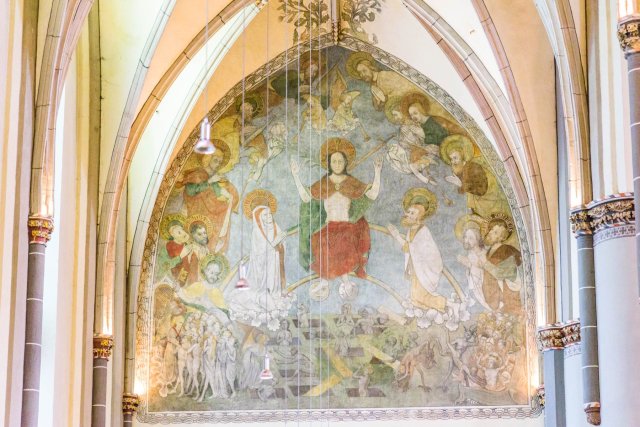
Mural in the celestory; I can find almost no information about this, it is almost ignored given the art treasures at eye level below. Stick a pin in me and I’d guess this is mid-C15, but I have no real evidence.
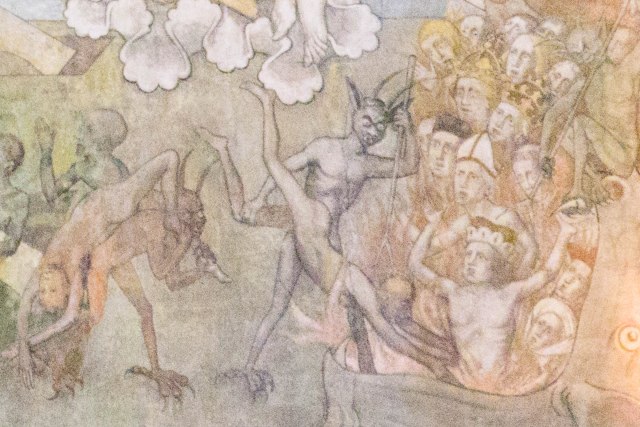
Bottom right, one can just see a bishop, naked but for his mitre, among those being tormented by the demons in hell!
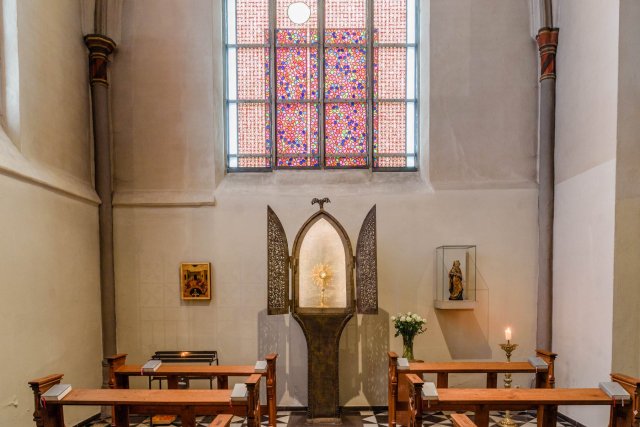
Blessed Sacrament Chapel at the east end of the north aisle, overlooked by some more of Karl-Martin Hartmann’s glass commissioned for the millennium.
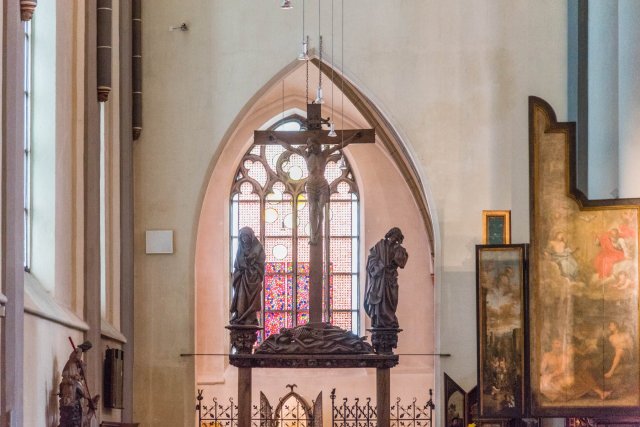
Executed ca. 1520, the Rood in the north aisle above the entrance to the Blessed Sacrament Chapel.
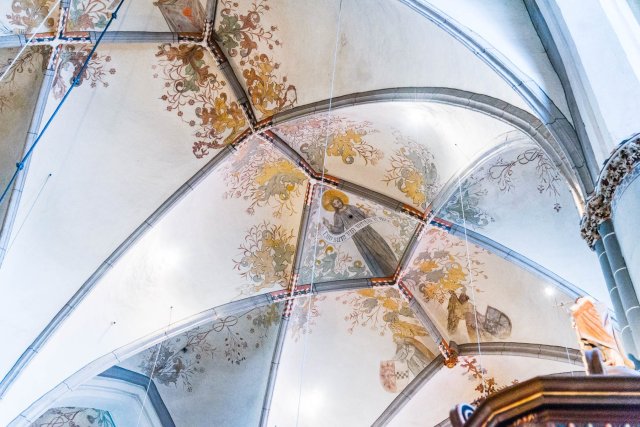
Rib vaulting and roof murals, I would guess from around 1420.
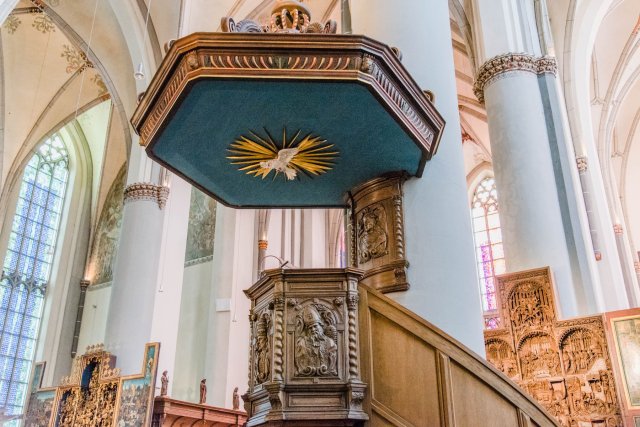
I can find little information about this pulpit online, other than it originally came from the former Dominican church in the city and therefore must date to around 1500.
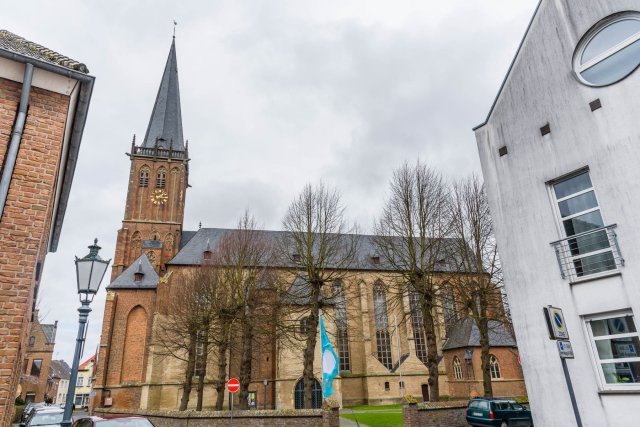
A difficult church to get a good exterior shot of and a finer church inside than out anyway: but here it is to round us off.





